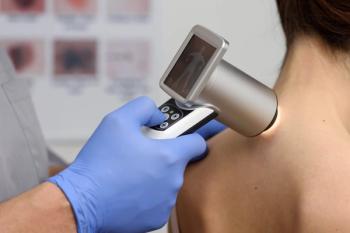
COPD executive care team cuts readmission rate in half
The COPD executive care team at Sanford Medical Center is leading to impressive results. Find out who is part of the team and how it works.
Creating a multidisciplinary executive care team to manage chronic obstructive pulmonary disease (COPD) is improving patient outcomes and cutting costs significantly at Sanford Medical Center in Fargo, North Dakota.
Managed Healthcare Executive (MHE) asked team leader Becky Anderson, a registered respiratory therapist and manager of Respiratory Care Services at Sanford, to elaborate.
MHE: What is the history of the executive care team?
AndersonAnderson: We started the program in 2008, as a way to reduce cost for COPD exacerbation treatment in the hospital. We also wanted to impact adherence to evidence-based care.
The director of respiratory care led development of the COPD inpatient care program. He initially recruited our pulmonologists and the hospitalist department chair, plus a clinical pharmacist to balance medication efficacy with cost. Soon after, colleagues from nursing, social services, finance, and quality joined. Information technology (IT) also became an integral part of the project to ensure our electronic health record (EHR) supported the work.
Today, our team is comprised of approximately 10 members across disciplines.
MHE: What are some of the team’s notable achievements?
Anderson: Over the years, we have reduced cost of care, which had been a negative net margin of $615 per admission, to an average of $1,400 per admission.
We have also improved adherence to evidence-based care for COPD exacerbation from an original 57% to above 90% over the past six years.
Perhaps most important, though, is that within six months of starting the program, we cut our readmission rate in half. In addition, our mortality rate improved to better than the national average.
These goals were made possible through buy-in across disciplines and the addition of a new position: the respiratory therapy COPD clinical specialist. These therapists work with both patients and the interdisciplinary team to facilitate improved healthcare-related outcomes for COPD patients.
MHE: What are two examples of recent initiatives?
Anderson: One initiative that impacts both inpatient mortality and readmissions is advance care planning. This interdisciplinary team is led by the nurse director of spiritual care. Our goal is to significantly increase the percentage of patients who have advance directives in their EHR, as well as referrals to palliative and hospice care. Having a plan in place reduces stress and anxiety for both the patient and their family. It also improves satisfaction with the dying experience.
Beginning in 2021, there will be government penalties for excess mortality for COPD patients. We are currently developing a best practice alert for our EHR, which will pop up when the patient meets certain criteria for advance care planning. Because we are targeting COPD patients, we will start this work in pulmonary clinic and refine for use in primary care.
A second initiative targets patients who have a history of tobacco use. There is evidence that low-dose computed tomography (LDCT) screening for patients who have a 30-pack year history helps to catch lung cancer at an early stage, when it is more treatable. A small group of respiratory therapists is working with our cancer center and pulmonary department to increase the number of referrals for LDCT screening. We identify qualifying patients seen in pulmonary clinic each week and inform the providers so they can make the decision on referral.
MHE: What are some of the challenges of the executive care team?
Anderson: Sanford Medical Center Fargo has three campuses. Especially in today’s climate of continual change, it is difficult pulling people together to meet, review outcomes, and plan for improvement.
Current technology is valuable in overcoming this barrier. Besides conducting Skype meetings, our work pushes forward using smaller interdisciplinary executive groups to develop a project charter. We then pull in content experts from across the organization to form subgroups, working on specific goals within the charter, which can be completed in a relatively short period of time. The executive group is responsible for ongoing oversight. They also connect wherever needed within the organization, reporting out to such groups as administration, enterprise, quality, and physicians.
Newsletter
Get the latest industry news, event updates, and more from Managed healthcare Executive.






















































